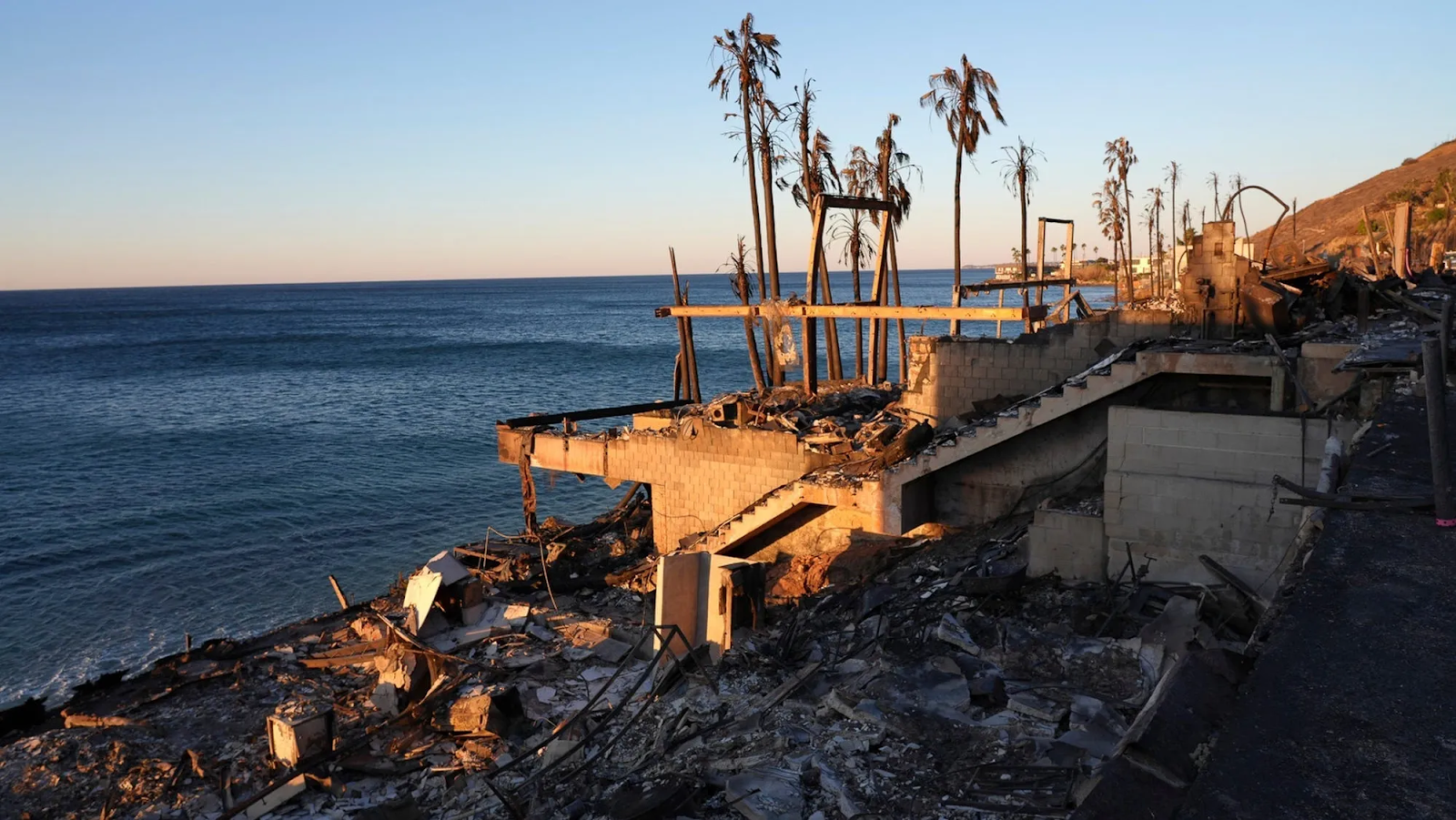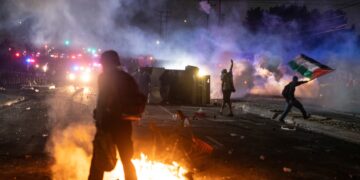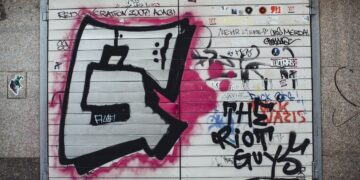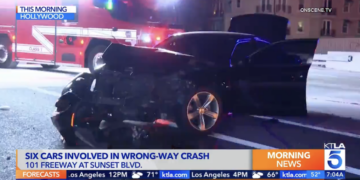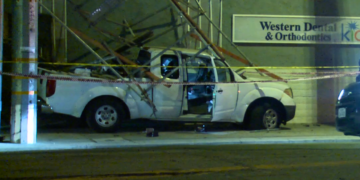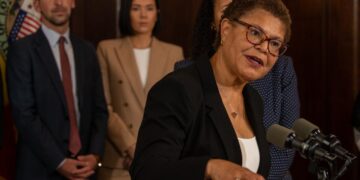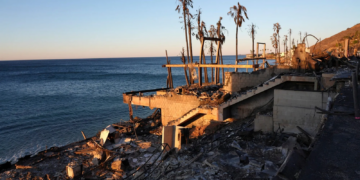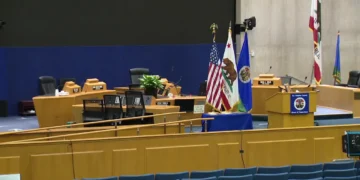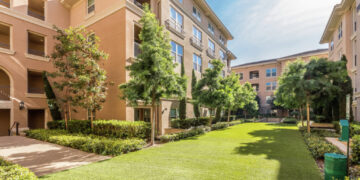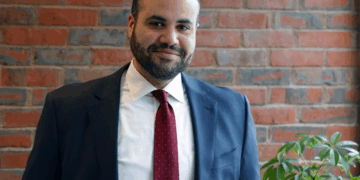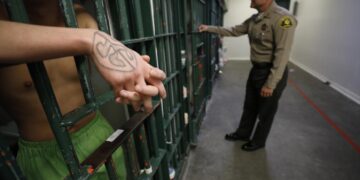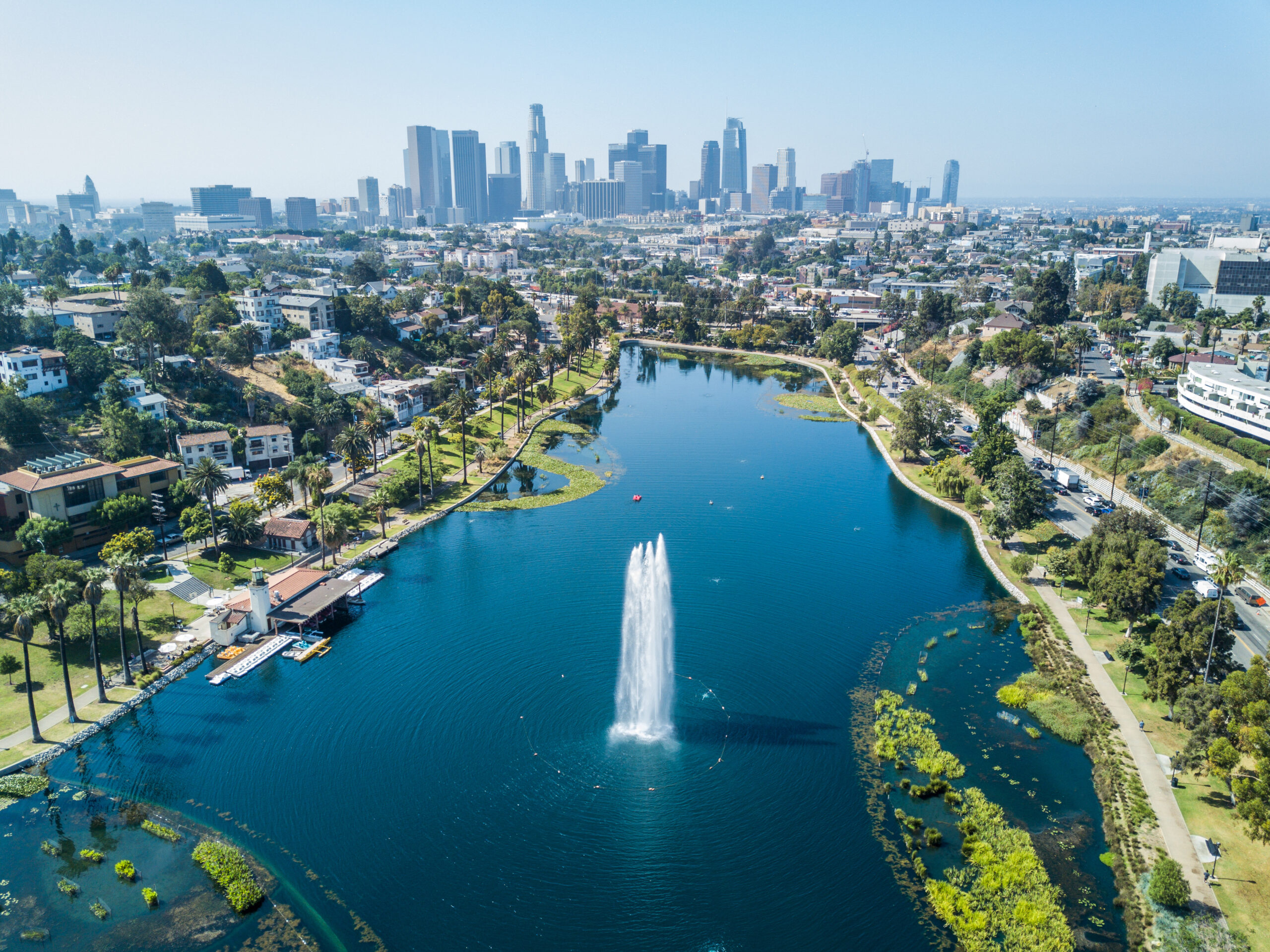The current iteration of Los Angeles already knows mass homelessness, energy unreliability, and a cost of living which has risen—and continues to rise—unreasonably out of control. Will L.A. 2.0 fare any better?
Welcome to New Los Angeles.
Ever since California Governor Gavin Newsom announced that he “already [has] a team looking at reimagining LA 2.0,” the Internet has been abuzz with rumors and theorization about what’s to come in the wake of the devastating wildfires. One could theorize endlessly, but Newsom and his administration have already said plenty that sheds light onto their vision for the nation’s second-most populous city.
In the interest in minimizing speculation, here’s what we can reasonably expect to see in L.A.’s future.
A Development for Developers
As part of his “Marshall Plan” for rebuilding L.A. 2.0, Newsom has issued an executive order to temporarily suspend certain statewide environmental regulations that impeded building. In it, he states that “strict compliance with various statutes and regulations specified in this Order would prevent, hinder, or delay the mitigation of the effects of these fires and windstorm conditions.”
This is quite the acknowledgement. It reads like a quiet but searing condemnation of both the glacial pace of California’s bureaucracy and the broad overregulation for which Sacramento’s supermajority is frequently criticized.
“If these regulations are an unnecessary hindrance for those recovering from the wildfires, why are they necessary at all?” asks the American Institute for Economic Research’s Matthew Gagnon.
Some speculate that the development most likely to be expedited will be affordable multi-family units so as to comply with the state’s goal of building 2.5 million such units in the next eight years. Residents can hardly be blamed for fearing this when state legislators like Senator Scott Weiner call single-family homes with yards “immoral” and pass legislation authorizing governments to bypass environmental review when constructing up to ten units on a single parcel.
To again quote Matthew Gagnon: “if, as we are frequently told, these types of environmental rules are indispensable, why then can they be tossed aside the moment they prove inconvenient?”
And so, however politically inconvenient it may be, both sides of the aisle now understand a longstanding claim from building industry leaders: that excessive the biggest factor contributing to California’s housing crisis is red tape.
“In California, the process of obtaining permits and approvals for new construction is notoriously complex and time-consuming,” writes Aaron Evans for Strata Property Solutions. “Developers face a labyrinth of regulations that span local, state, and federal levels. Environmental impact reports, zoning laws, community opposition, and an array of other requirements can delay projects for years… The bureaucratic hurdles are so significant that even seasoned developers with vast resources are finding it increasingly untenable to operate.”
When any industry faces this degree of regulation, it should come as no surprise that its opportunities dwindle and costs rise. Developers must make decisions about which projects to take and which to avoid. And because costs have risen so staggeringly, the most attractive projects are extraordinary mansions far outside the means of most Americans and, at the same time, the low income housing so frequently pushed by Sacramento. There is not sufficient incentive to build new homes for middle class households—hence the record unaffordability of existing single-family properties and, with it, rising costs for renting.
“[The rise in construction costs] drags down the economy by discouraging investment in job-creating businesses; it drives employers and their workers to other states where they can afford housing; it fuels the nation’s highest level of functional poverty and it’s the major factor in California’s worst-in-the-nation homelessness,” writes CalMatters’ Dan Walters.
Industry leaders would argue that Newsom’s decision to roll back burdensome regulations—however temporarily—is the right first step to take. What ends up being built up from the ashes remains to be seen, of course—but, if successful, it could constitute the first meaningful effort to address its myriad housing problems and build pathways to home ownership for first-time buyers.
Or, in a worst case scenario, the only residential buildings built in New Los Angeles will be designed only for the extreme ends of the economic spectrum.
Olympic Hurdles
Los Angeles is currently set to host the 2028 Summer Olympics—a development for which President Donald Trump proudly and readily takes credit. If successful, it could be a huge economic boon for the region. But, as it stands, there are serious doubts about whether or not the City can even accommodate the massive influx of visitors—a sum which totaled well 10 million in the 2024 Paris games.
“International Olympic Committee rules stipulate that host cities must be able to accommodate the influx of global athletes and fans. The University of California campus, the planned venue for the Olympic Village, is not far from the Pacific Palisades fire. Neither is another prospective venue, the Riviera Country Club, which is set to host the golf competition,” reads a recent New York Times piece.
The same piece points out that taxpayers are on the hook for any overruns to the $7 billion budget set by LA28. With the wildfires already causing the City an estimated $250 billion in damages—which Newsom stated would make these fires the most costly in U.S. history—there’s an argument to be made that Angelenos have bigger priorities than sports and entertainment.
To that point, Turning Point USA Founder Charlie Kirk shared his opinion that the Los Angeles Olympics should be canceled altogether. “If you can’t fill a fire hydrant, you aren’t qualified to host the Olympics. Move them to Dallas, or Miami, so the world’s athletes can compete in a place capable of actually safely building and running something,” he wrote on Twitter/X. This opinion was not confined to conservative circles—similar sentiments were shared by Los Angeles Councilman Hugo Soto-Martinez.
“If we’re going to host the Olympics in 2028, we need to make sure that it’s actually going to benefit our residents, who are reeling from losing their homes, jobs, and livelihoods,” said Soto-Martinez.
Evidently, the President disagrees with both Kirk and Soto-Martinez. “These are America’s Olympics,” Trump said. “These are more important than ever to L.A. and I’m going to be supportive in every way possible and make them the greatest Games.”
If Trump follows through on that promise—which would almost assuredly necessitate additional funding from the federal government—it would make for an inspiring comeback story.
“The Games could become part of what I will call the ‘narrative of renewal,’ as city boosters will use the Games as a way to focus local, national and international attention on urban renewal, the ‘new’ Los Angeles and the compelling image of a city emerging from the ashes,” Professor Emeritus John Rennie Short (University of Maryland, School of Public Policy) told the New York Times.
Doubling Down on Electric Dreams
It’s widely known that California has made a commitment to clean energy and weaning off fossil fuels.
It’s also widely known that California experiences frequent rolling blackouts and brownouts.
Historically, Los Angeles has opted to share in this mission and endeavors to be 100% carbon-free by 2035. In December 2022, its City Council unanimously approved an ordinance requiring all new construction to be fully electric—clearly with the goal of lowering L.A.’s carbon footprint. The law, however, could not do anything to reduce the number of existing gas hookups in buildings constructed prior to January 2023.
Wildfires, on the other hand, can—and have.
While Newsom has stepped in to suspend some environmental regulations, as previously discussed, it’s highly unlikely he will do so with regard to L.A.’s local electric ordinance. Unless something changes, gas appliances will not be grandfathered into new developments on old property, barring some exceptions.
And so, one can reasonably expect Los Angeles 2.0 to be a City that runs on electricity—at least to a greater degree than did its predecessor. Whether or not that’s a good thing for Angelenos depends on the extent to which city officials invest in strengthening its electric grid, which relies heavily on coal-fired plants in Utah and Arizona, hydropower generated by the Hoover Dam and the Los Angeles Aqueduct, nuclear power from the Palo Verde Nuclear Generating Station, and—rather ironically—from four natural gas-fired generating stations in the City itself.
In general, Californians have embraced the proposed switch to electric vehicles. Nearly 1 million were registered in 2023, and in the second quarter of 2024 alone, Californians purchased nearly 120,000—which constituted more than one-fourth of all new vehicle sales in the state. While Newsom recently celebrated the installation of California’s 150,000th E.V. charger, others say that the “current distribution system for Los Angeles” is “not sustainable for the future.”
“The adoption rate [of EVs] is growing so exponentially high that we have to act fast,” said Denis Obiang, the Los Angeles Department of Water and Power’s Director of Power Systems Planning. “The state is asking us to take over what the gas companies used to provide. [For cars,] it’s shifted to [the] electric utility to provide the energy electrically, so that increased the load level.”
Meanwhile, despite Newsom’s boasting about California’s renewable energy progress, widespread power outages remain an ongoing problem that has now stretched into its second decade.
“Since the early 2000s, California has been plagued with rolling blackouts because the state’s grid cannot supply sufficient baseload power,” writes Chris Talgo for The Washington Times. “Incredibly, two decades after this initial crisis, California still experiences frequent brownouts and blackouts because it has become even more dependent on unreliable wind and solar power.”
Talgo argues that both California and the nation’s electric grid are “unnecessarily in danger from corrupt climate alarmists who worship at the altar of net-zero emissions and greedy, shortsighted utility company CEOs who unflinchingly prioritize profits from the green energy transition scam over the grid’s long-term viability.”
In the coming years, parts of Los Angeles will see a new skyline—one composed of all-electric buildings that may marginally decrease the City’s carbon footprint. But will that make L.A. 2.0 a more resilient City? Or will it become more dependent on unreliable power and, therefore, further susceptible to disruption?
Conclusion
In the end, the transformation of Los Angeles into “L.A. 2.0” carries a fundamental question: who exactly will benefit from this new vision for the City of Angels? “Will it be residents or multinational corporations?” asked Councilman Soto-Martinez with regard to the Olympics.
Will it be the middle class who so desperately need homes, or will it be the uber-wealthy who not only can afford to rebound but have already negotiated a five-year suspension of L.A.’s mansion tax?
Will it be the environment, or will it be utility companies who, in the words of Chris Talgo “lobby for closing down coal and natural gas power plants and replacing them with new [renewable energy] projects [upon which] utilities receive a guaranteed return on investment of approximately 10 percent?”
The current iteration of Los Angeles already knows mass homelessness, energy unreliability, and a cost of living which has risen—and continues to rise—unreasonably out of control. Will L.A. 2.0 fare any better?
If Los Angeles truly wants to “reimagine” any component of its future, it must first confront the inconvenient reality that Sacramento’s bureaucracy, overregulation, and blind ambition have repeatedly failed it.

In the wake of historic wildfires that have ravaged the Pacific Palisades and surrounding regions, Governor Gavin Newsom announced that he “already [has] a team looking at reimagining LA 2.0.” In order to expedite reconstruction, Newsom temporarily suspended some environmental regulations that have impeded development—regulations which have contributed to the staggering rise in construction costs for building homes and, more broadly, California’s housing crisis. Similarly, the push for affordable multi-family units and the promise of an all-electric future, are overshadowed by concerns over L.A.’s fragile electric grid and recurring power outages. There is also talk about the fate of the 2028 Summer Olympics, with prominent voices on both the Left and the Right questioning whether the city can handle the massive influx of visitors—and whether such grand plans should take precedence over the recovery effort. Ultimately, L.A. 2.0 risks becoming a city built only for the extreme ends of the economic spectrum and ignoring the realities of its most vulnerable middle-class inhabitants.
)
